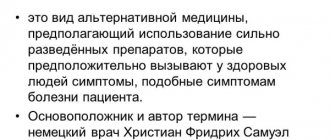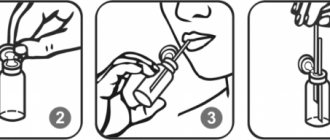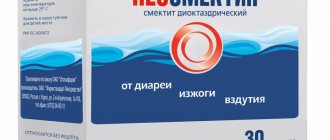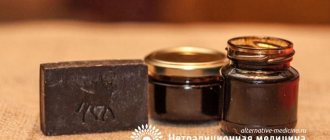Children are most susceptible to gastrointestinal disorders, since their bodies are not yet so adapted to food, and their immunity has not yet fully developed. And children often put their hands in their mouths, eat unwashed foods, etc. And therefore they are often overtaken by diarrhea, dysbiosis and other various unpleasant diseases. An excellent drug for normalizing the condition of children is Bactisuptil.
Effect of the drug
Baktisubtil - for the treatment of the gastrointestinal tract
The main active ingredient of the drug is the bacterium strain Bacillus cereus. Or rather, the composition does not contain the bacterium itself, but a dried powder. Due to the fact that the drug contains bacterial spores, it easily reaches the gastrointestinal tract and intestines. If the preparation contained just a bacterium, it would die in the stomach, since gastric juice easily digests it. After the bacterium enters the body, it begins its action in the intestines. It is noteworthy that ten minutes after taking the capsule, it already reaches the intestines and begins to act, killing pathogenic bacteria.
When the bacterium has reached its destination, it enters the vegetative stage and produces all the necessary enzymes for the breakdown of proteins and fats. In addition, with the help of Bacillus cereus an acidic environment is created, as a result of which the decay process is slightly inhibited. In addition to the above actions, the bacterium promotes the synthesis of vitamin B, saturating the intestines with it. Vitamin B helps normalize digestion and intestinal function.
Bactisuptil can be used simultaneously with antibiotics, since they do not have any negative effect on each other.
Bactisubtil capsule
Instructions for medical use of the drug
Description of pharmacological action
The bacteria B. cereus IP 5832 secrete broad-spectrum antibacterial substances that suppress the development of pathogenic and conditionally pathogenic bacteria, have an antimicrobial, antidiarrheal effect, and restore the intestinal microflora. The bacterial spores contained in the preparation are resistant to the action of gastric juice. Their germination into vegetative forms of bacteria occurs in the intestines.
Indications for use
Acute and chronic diarrhea of various origins (including infectious), intestinal dysbiosis (especially after treatment with broad-spectrum antibiotics), enteritis, enterocolitis; prevention and treatment of intestinal dysfunction caused by chemotherapy or radiotherapy.
Release form
capsules 35 mg; blister 20 cardboard pack 1; capsules 35 mg; blister 20 box (box) 450;
Contraindications for use
Hypersensitivity.
Side effects
When used according to indications in recommended doses, no effects were detected.
Directions for use and doses
Inside, 1 hour before meals. Children over 3 years old - 3–6 caps. per day for 7–10 days; teenagers and adults - 4–8 caps. per day for 7–10 days. For young children or in case of difficulty taking, the capsules can be opened and the contents taken with cold or lukewarm liquid.
Special instructions for use
Do not drink it with hot drinks or take it simultaneously with alcoholic drinks. If diarrhea persists for more than 2 days, you should consult your doctor.
Storage conditions
In a dry place, protected from light, at a temperature not exceeding 25 °C.
Best before date
36 months
ATX classification:
A Digestive tract and metabolism
A07 Antidiarrheal, intestinal anti-inflammatory and antimicrobial drugs
A07F Antidiarrheal drugs of biological origin, regulating the balance of intestinal microflora
A07FA Antidiarrheal drugs of biological origin, regulating the balance of intestinal microflora
Indications for use
Bactisubtil: instructions
As mentioned above, Baktisuptil is used in children when problems with the gastrointestinal tract occur. The main indications include:
- Dysbacteriosis. Most often, dysbiosis develops after taking antibiotics, especially when proper prebiotic therapy has not been carried out afterwards. With dysbiosis in children, attacks periodically occur, during which the child complains of abdominal pain, the stool becomes liquid, and the appetite also disappears
- Intestinal infection. If a child is diagnosed with an intestinal infection, this indicates severe intoxication. With an intestinal infection, the temperature rises, diarrhea, weakness, etc. appear. This occurs due to the excessive presence of harmful bacteria in the intestines and their active actions.
- Rotavirus infection, during which the temperature also rises and diarrhea appears
- Diarrhea. It is generally accepted that with diarrhea, the number of bowel movements increases to 5-20 times per day. The most common cause is the activation of harmful bacteria
- Colitis, during which the child feels severe abdominal pain due to the predominance of harmful bacteria in the intestines
- Enterocolitis. This is an acute inflammation of the large or small intestine
Sometimes Bactisuptil is recommended to be taken in parallel with antibiotics in order to protect the child from the development of dysbiosis. If this was not done during treatment with such drugs, then you need to take Bactisuptil afterwards.
Evaluation of the clinical effectiveness of the drug Bactisubtil
Diarrhea is one of the most common intestinal disorders in the clinic of internal medicine [1–3]. Diarrhea refers to frequent bowel movements with the release of liquid or pasty stool. Diarrhea is characterized by the following signs: frequent (more than 2-3 times per day) bowel movements, an increase in the total mass of feces (more than 200 g per day), an increase in the water content in feces from 60-75% to 85-90%. Taking into account the mechanisms of development, the following types of diarrhea are distinguished: Secretory - caused by hypersecretion of water due to activation of adenylate cyclase. Its causes are enterotoxigenic infections; hormone-producing tumors; taking laxatives from the group of anthraquinones (senna, buckthorn), prostaglandins, cytostatics; idiopathic malabsorption of bile or long-chain fatty acids (eg, due to ileal resection); graft versus host disease. Osmotic (hyperosmolar) - associated with the presence of unabsorbed osmotically active substances in the intestinal lumen. The causes of osmotic diarrhea include enzymopathies (lactase, disaccharidase deficiency), pancreatic insufficiency, celiac disease, dumping syndrome, and some medications (osmotic laxatives - magnesium sulfate, mannitol, sorbitol). Exudative - caused by damage to the integrity of the epithelium due to inflammatory bowel diseases (ulcerative colitis, Crohn's disease), radiation injuries, ischemic colitis, intestinal tuberculosis, diverticulosis, malignant neoplasms, intestinal infections (dysentery, salmonellosis). Motor (hyperkinetic) – associated with disturbances of intestinal motility that develop with irritable bowel syndrome (IBS), diabetic enteropathy, thyrotoxicosis, scleroderma, after vagotomy. Diarrhea caused by taking antibacterial agents (antibiotic-associated diarrhea - AAD) deserves special attention. It is one of the most common complications of antibiotic therapy (frequency 5–30% depending on the group of drugs used). Many factors may be involved in the development of AAD. Antibiotics can directly increase intestinal peristaltic activity (clavulanic acid); disrupt the integrity of the intestinal mucosa, creating conditions for superinfections and activation of facultative and opportunistic microorganisms; weaken the enzymatic functions of normal microflora and disrupt colonization resistance. Diarrhea may be the result of incomplete absorption of antibacterial agents (cefoperazone, cefixime). There are a number of symptomatic medications used to treat diarrhea. These, in particular, include probiotics - cultures of bacteria with antagonistic properties (Enterol, Baktisubtil, etc.) [4–7], used to correct dysbiotic changes in the intestine. Baktisubtil contains dried powder of bacteria strain Bacillus cereus IP 5832 (1 billion spores) 35 mg, calcium carbonate - 25 mg, kaolin - 100 mg. Germination of bacterial spores occurs in the intestines. Vegetative forms of bacteria prevent the growth of putrefactive opportunistic microflora, activate macrophages, synthesize amino acids, and release enzymes that break down proteins, fats and carbohydrates. Thanks to the production of antibiotic substances, enteropathogenic bacteria strains E. coli, Staphylococcus aureus, bacteria of the genus Proteus, etc. are eliminated. Baktisubtil has found wide use in infectious diseases practice as a means of empirical therapy in the complex treatment of acute intestinal infections (salmonellosis, dysentery, escherichiosis, foodborne toxic infections). The drug is actively used in therapeutic, gastroenterological, pediatric practice in the complex treatment of enteritis of various etiologies, functional intestinal diseases (FBD), during and after antibacterial therapy, etc. Baktisubtil can be used as a first-line drug for the treatment of the following types of diarrhea: – infectious (caused by bacteria and viruses); – antibiotic-associated (including its prevention during antibacterial therapy); – medicinal; – caused by FZK and organic intestinal diseases. In addition, Baktisubtil (due to its ability to normalize the intestinal environment, which promotes the activation of obligate, indigenous microflora) is a means of correcting microbiocenosis disorders. The purpose of this study was to evaluate the clinical effectiveness of the drug Bactisubtil in the treatment of FCD with diarrhea syndrome and in the prevention of dysbiosis in patients with lung diseases during antibacterial therapy. Material and methods Three groups of patients were examined: • The first group – 20 patients with FCD (average age of the examined – 41.5±7 years, men – 5, women – 15). IBS with diarrhea predominance (IBS-D) was observed in 11 people, functional diarrhea (FD) was observed in 9 people. • The second group - 10 patients (men - 3, women - 7) with chronic and acute lung diseases (APD) who received antibacterial therapy. The average age of the patients was 41.7±7.5 years. 5 people were diagnosed with chronic bronchitis in the acute stage, 5 with acute pneumonia. • The third group (control) – 10 patients (men – 4, women – 6) with chronic and acute LD who received antibacterial therapy. The average age of the patients was 44.3±8.6 years. 6 people had chronic bronchitis in the acute stage, 4 had acute pneumonia. Patients of the first and second groups were prescribed Bactisubtil 2 capsules 3 times a day for 10 days. The criteria for assessing the effectiveness and tolerability of Baktisubtil were: – dynamics of changes in clinical symptoms; – bacteriological examination of stool; – transit time of activated carbon through the intestines (carbolene test); – determination of short-chain fatty acids (SCFA) in feces as an integral indicator of the state of the intestinal microflora [5,8–10]. These parameters were assessed before the start of treatment with Baktisubtil and after its completion. Results and discussion Efficacy of Baktisubtil in the treatment of FCD All patients with IBS-D and FD complained of abdominal pain of varying intensity and localization. They also noted a change in the nature of the stool and its consistency, bloating, rumbling and flatulence (Table 1). From the data presented in 1 it follows that, against the background of a 10-day course of treatment with Baktisubtil, all patients with FCD showed pronounced positive changes in clinical symptoms. In particular, in 75% of patients, stool frequency completely returned to normal, and in 25%, stool frequency decreased, in 95% it became formed or semi-formed, etc. The time it takes for coal to pass through the digestive tract as a result of treatment with Baktisubtil increased by more than 2 times. When examining stool before starting treatment with Bactisubtil, patients with FCD were found to have a deficiency of obligate flora and the presence of opportunistic microflora. A decrease in the number of bifidobacteria was detected in 20 people, lactobacilli - in 17. Opportunistic flora was detected: fungi of the genus Candida - in 5 people, Staphylococcus aureus - in 6, opportunistic enterobacteria - in 9 people. Most often, dysbacteriosis of grade 2–3 was observed in patients with FCD (Table 2). As a result of treatment with Bactisubtil, positive changes were noted in the composition of the colon microflora. The number of patients with dysbiosis of 2-3 severity decreased from 80 to 45%. On the contrary, the number of patients with dysbiosis of 0–1 severity increased from 10 to 55%. After treatment, the number of patients with normalization of obligate microflora increased. The number of patients in whom opportunistic flora was isolated, on the contrary, decreased. Before treatment, in patients with IBS-D and FD, an increase in both individual SCFAs and their total amount was noted in the feces. This indicates increased activity of microflora producing SCFA (Table 3). After a course of treatment with Baktisubtil, a decrease in the absolute content of individual acids was observed: propionic, isobutyric, butyric, isovaleric, valeric, as well as a decrease in their total amount. This may indicate a decrease in the functional activity of the colon microflora due to the normalization of the motor-evacuation function of the intestine [11–12]. The profiles of C2–C4, which make the main contribution to the total pool of SCFA, were studied in patients. Initially, in patients with FCD, a significant increase in the relative content of propionic and butyric acids was noted in the feces with an increase in the level of acetic acid in the general C2-C4 pool compared to the group of healthy individuals. The presence of these changes in patients with diarrhea syndrome indicates an increase in the number and activity of the anaerobic microflora, represented mainly by populations of microorganisms of the genera Bacteroides, Clostridium, etc. [11]. After a course of treatment with Baktisubtil, there is a tendency towards normalization of the C2–C4 profile, which provides conditions for the activation of obligate microflora. In the overall assessment of the effectiveness of treatment with Baktisubtil, the absence of clinical manifestations of the disease and normalization of laboratory parameters were taken as clinical remission. Significant improvement was noted with a decrease in clinical symptoms and changes in laboratory parameters by more than 50%. An improvement was defined as a decrease in clinical symptoms and a change in laboratory parameters of less than 50%. After treatment with Baktisubtil, clinical remission was noted in 9 patients, significant improvement in 3, improvement in 5. Thus, the effectiveness of treatment for FZK with Bactisubtil was 85%. Efficacy of Baktisubtil against the background of antibacterial therapy All patients with LM included in the study received antibacterial therapy using broad-spectrum (90%) and selective (10%)-spectrum antibiotics. All patients initially showed symptoms of intestinal dyspepsia, which were probably associated with the antibiotic therapy (Table 4). After 10 days of taking Baktisubtil against the background of antibacterial therapy, positive changes were noted in the clinical symptoms of intestinal dyspepsia: the pain symptom was relieved in all patients who noted it, rumbling in 5 people, flatulence in 2. After treatment with Baktisubtil, stool consistency and frequency of bowel movements normalized: periodic relaxation after treatment was detected in only 1 patient. However, 3 patients developed constipation by the end of treatment, which resolved spontaneously after discontinuation of Baktisubtil. The frequency of detection of pathological impurities in feces decreased from 40 to 10%. At the same time, in the control group that received only antibacterial therapy, there was an increase in the symptoms of intestinal dyspepsia. During bacteriological examination of stool, intestinal dysbiosis of varying severity was determined in all patients against the background of antibacterial therapy (Table 5). Treatment with Bactisubtil reduced the severity of dysbiosis; in the control group, on the contrary, it increased slightly. During antibacterial therapy, changes were noted in the composition of the main, facultative and residual microflora of the colon. After treatment with Baktisubtil, patients in the main group observed an increase in the number of obligate flora (bifidobacteria), a decrease in cases of detection of defective and hemolyzing Escherichia coli, clostridia, and the number of opportunistic enterobacteria. At the same time, fungi of the genus Candida continued to be detected in them. In the control group (without Baktisubtil administration), there was a decrease in the amount of obligate flora; the initial frequency of detection of defective and hemolyzing Escherichia coli, clostridia, opportunistic enterobacteria, and fungi of the genus Candida was maintained. The data obtained allow us to recommend the use of the drug Baktisubtil in the restoration of microbiocenosis disorders associated with antibacterial therapy. SCFA content was assessed in the stool of patients in both groups. Initially, there was a sharp (3–3.5 times) decrease in the absolute concentration of SCFA compared to the norm. As a result of therapy with Bactisubtil, there was a tendency to increase the concentrations of individual SCFAs and their total content. In the control group, the opposite trend was noted. During treatment with Bactisubtil, the C2–C4 profile also shifted towards normal values: the relative content of acetic acid increased, and the proportion of butyric acid decreased. Conclusions 1. The drug Bactisubtil is an effective treatment for patients with FCD (IBS-D and functional diarrhea). The clinical effectiveness of Baktisubtil was 85%. 2. Bactisubtil is a drug that changes the intracavitary environment of the colon, which is expressed by changes in the composition and spectrum of SCFA. 3. Treatment with Baktisubtil promotes positive changes in colonic microbiocenosis, which is confirmed by microbiological research data. 4. Baktisubtil is an effective drug for the prevention of dysbiotic disorders during antibacterial therapy.
Literature 1. Ivashkin V.T., Sheptulin A.A. Diarrhea syndrome. Geotar Medicine, Moscow, 2000. p. 135. 2. Zlatkina A.R. Pathophysiological mechanisms of diarrhea // Mucocytoprotection, pathophysiological and clinical aspects. M., 1998. pp. 15–20. 3. Parfenov A.I. Diarrhea //Russian Medical Journal, 1998. No. 7. With. 440–448 4. Elizavetina G.A., Ardatskaya M.D., Minushkin O.N. Chronic bowel diseases. Modern view on etiology, pathogenesis, diagnosis and treatment (review) // Kremlin Medicine 1998. No. 2. pp. 22–25. 5. Ardatskaya M.D. Clinical significance of short-chain fatty acids in gastrointestinal pathology. Author's abstract. Doctoral dissertation, M.: 2003, p. 48. 6. Minushkin O.N., Ardatskaya M.D., Dubinin A.V. Intestinal dysbiosis: modern aspects of studying the problem, principles of diagnosis and treatment (review). // Therapeutic archive. 2001. No. 2. p. 67–72. 7. Minushkin O.N., Minaev V.I. (ed), Mitrokhin S.D., Ardatskaya M.D. and others (compilers), Complex diagnosis, treatment and prevention of intestinal dysbiosis (dysbiosis) in the clinic of internal diseases of the MC UD PRF (methodological recommendations), M.: 1997. 8. Babin V.N., Minushkin O.N., Dubinin A. .V et al., Molecular aspects of symbiosis in the host-microflora system; Russian Journal of Gastroenterology, Hepatology, Coloproctology, 1998. No. 6. pp. 76–82. 9. Short Chain Fatty Acids./ Congress Short Report Falk Symposium, comp. by Scheppach W. – Strasbourg, 1993. – p. 50. 10. Ardatskaya M.D., Ikonnikov N.S., Minushkin O.N.. RF Patent “Method for separating a mixture of fatty acids of the C2–C6 fraction by gas-liquid chromatography” No. 2220755, priority dated July 23, 2002. 11. Gottschalk G. Metabolism of bacteria. Per. from English M.: MIR, 1982. p. 445. 12. Ardatskaya M.D., Minushkin O.N., Nonikov V.E. and others. The content and profile of volatile fatty acids in the feces of pulmonary patients before and after antibacterial therapy (facts and reflections). // Clinical Bulletin, 1995. No. 3. pp. 13–15.
How to use
Bactisubtil: capsules
The length of time you take the drug depends on how serious the disease is. A special role is played by the child’s age and weight. For young children, it is best to mix the contents of the capsule with milk, juice, formula, etc. It will be much easier this way, because no small child is able to swallow a capsule so large for him. It is desirable that the liquid in which the contents of the capsule will be diluted is at room temperature. Under no circumstances should you pour hot water or boiling water, as under the influence of such temperatures the beneficial properties will immediately disappear. Bactisubtil is used as follows:
- If a child has chronic diseases of the gastrointestinal tract, then it is necessary to give him one capsule two or three times a day an hour before meals.
- If the child has an acute stage of the disease, then it is necessary to give one capsule three to six times a day. Also an hour before meals. If the case is severe, then the number of capsules should be increased to ten
It should be noted that there is no dependence and order of taking Bactisuptil and other medications. Bactisuptil belongs to a new generation of drugs, and therefore it in no way aggravates the effect of medications.









